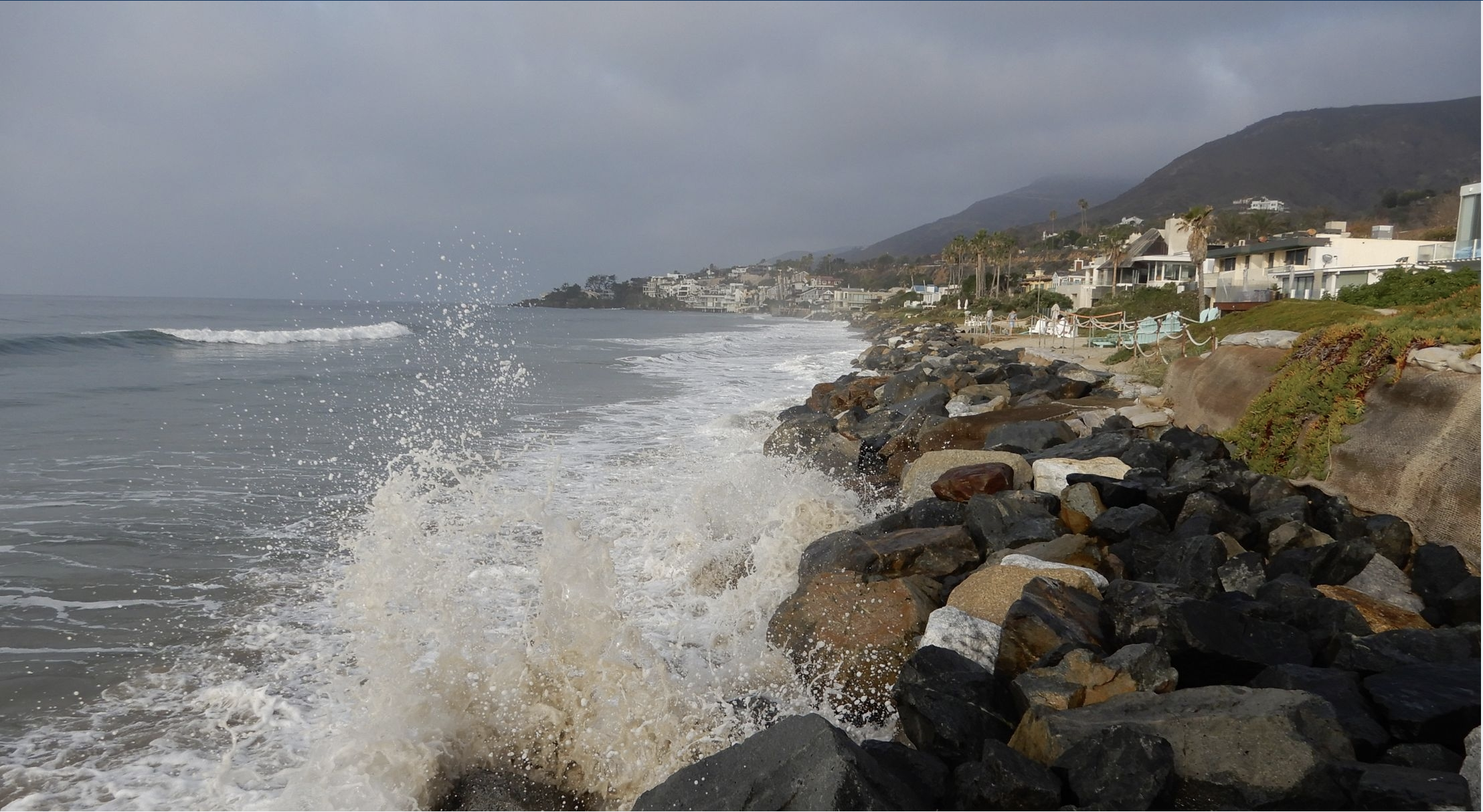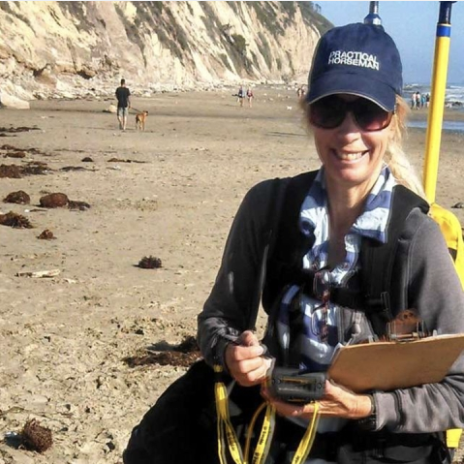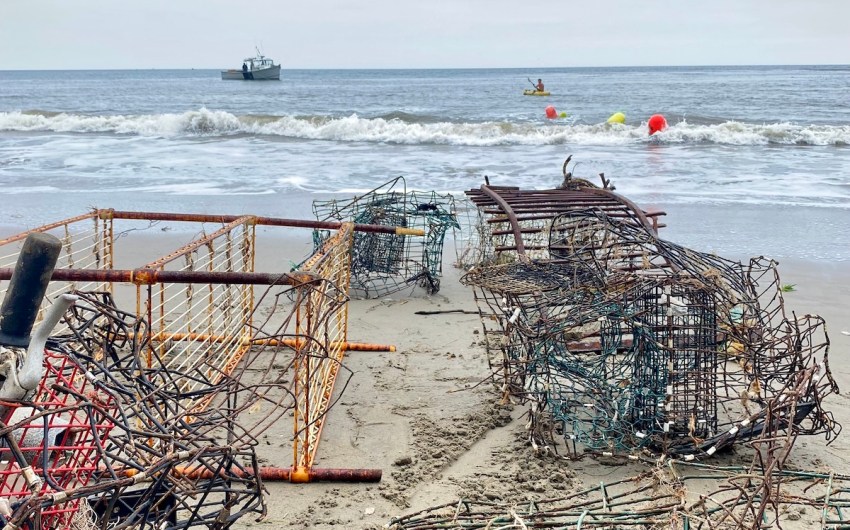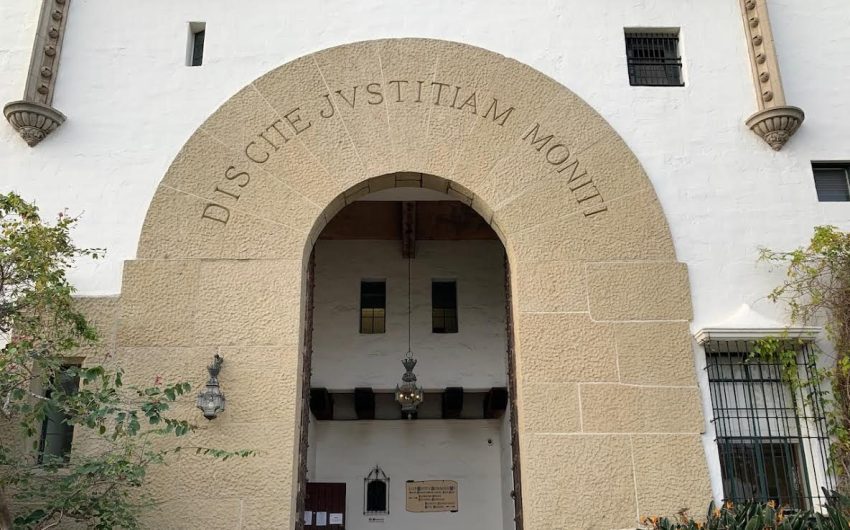Securing the Future of California’s Coasts
Director of UCSB's Ocean & Coastal Policy Center Leads Team of Researchers to Develop California Beach Resiliency Plan

This article was originally published in UCSB’s ‘The Current‘.
A brief stroll along the Santa Barbara seashore leaves no doubt that our beaches are in peril. Stronger storms, bluff erosion and sea-level rise all threaten our coast. Without intervention, two thirds of Southern California’s beaches will be inundated by 2100, according to the U.S. Geological Survey. But rather than merely reacting to what the ocean throws at us, the state of California has commissioned a strategic plan to prepare for the future.
“In California, the beaches have long been understood as an important part of our way of life,” said Charles Lester, director of UC Santa Barbara’s Ocean & Coastal Policy Center. “But climate change and sea-level rise are bringing tremendous changes to our shoreline.”
Lester is leading a team of researchers from five institutions and organizations to develop the California Beach Resiliency Plan. Their work will be supported by a $2.1 million grant from the Ocean Protection Council, a state government agency tasked with safeguarding California’s coast through funding research, policy and management. The effort will produce concrete guidance for beach resiliency from the community level up to the state level covering the entire Californian coast.

This project has three components. The first consists of snapshot assessments of beaches at the county level, spanning all 20 of California’s coastal counties. This aspect will characterize beaches along different dimensions, such as their ecology, geography and social value. The second component is decision guidance: a framework for helping local communities make decisions about how to interpret all this information and which interventions to consider. The third facet encompasses state-level recommendations to inform broader strategies and actions.
The whole project will be built from the ground up. Work on individual beaches, communities and habitats will shape guidance at the local level. Local context will influence county-level guidance, which will then inform statewide planning. “The beach is a complex system,” Lester said. “There are all these different dimensions that interact with each other. And what we should do about it really depends on local context.”
A holistic account of the issue will require being multidisciplinary, interdisciplinary and transdisciplinary, Lester added. That’s why he’s bringing together experts from different fields.
For instance, UCSB sociology professor Summer Gray will work with local communities to understand the human aspect of coastal use and access. She’s curious about how different groups value the beach, and how losing beaches will affect Californians and their communities. She also plans to investigate how changes to the coast might influence existing inequities. “It’s very important as we’re thinking about the future that we don’t recreate the same problems that got us into the mess that we’re in,” Gray said.

The team is well aware that how they approach the project will influence their perspective and intends to scrutinize the assumptions they enter with. “How you frame an issue may perpetuate a problem or a set of inequities,” Lester said. “For example, in choosing the county as a unit, you’re embracing a legal, political structure in California that doesn’t necessarily capture geophysical dynamics within a littoral cell, the biological dimensions of a flyway, or the cultural stewardship and presence of a tribe.”
As a former director of the California Coastal Commission, Lester is keenly aware of the history and importance of coastal access in the state. The first Coastal Commission was established in 1972. And since June 8, 1976, the California Constitution has guaranteed the public’s rights to access the ocean. Since then, the state has a rich history of proactive coastal management, including drawn out legal disputes to ensure public coastal access. “We spent 50 years protecting beach access,” Lester said, “and now it’s going underwater.” The Resiliency Plan aims to address what should be done about this so those hard-won gains aren’t lost.
Socially and legally, we’re quite invested in where the beaches were in the 20th century. But geologically speaking, beaches come and go; they change over the course of seasons, years and decades. “Sandy beaches are incredibly thin strips of constantly changing habitat,” explained Jenny Dugan, an ecologist at UCSB’s Marine Science Institute who is also on the team.
For such an iconic and valued feature of our state, the shore practically vanishes on maps. “Beaches are so narrow — relative to places measured in acres like wetlands, or farmland, or coastal cities — that they just disappear in many types of visual representation,” Dugan said. And their resiliency is tied to their dynamic nature; beaches need space to shift position over time.

We might be able to preserve more of our beaches if we incorporate this concept into decision making, the researchers explained. “Wherever you can give beaches room to move you have an opportunity,” Dugan said. “We want to help communities identify where these types of opportunities might be.” For instance, many of southern California’s wider, groomed beaches could support dunes that could both provide habitat and buffer against rising sea level, if allowed to form.
Whether communities decide to restore dunes will depend on how they weigh different values and interventions. “It’s about giving communities the tools so that they can make those decisions,” Lester said.
The project’s guiding principle is to approach coastal resilience from a proactive mindset, because simply reacting to disasters leaves us with limited options. “When we manage disasters, we have to deal with whatever pieces are left to reassemble,” said Gray. “What we’re trying to do here is anticipate what we know is coming and try to provide some guidance that helps people navigate these problems before they become disasters.”
“The beach has always been a central and tremendously valuable part of California’s way of life,” said Lester. And the state has a long history of shepherding coastal access, ecology and economies. Back in 1972, under Governor Ronald Reagan, California created a Comprehensive Ocean Area Plan, which included a call for managing beach erosion, even raising the idea of purchasing eroding lands.
“It’s important to revisit those initial, proactive planning impulses we had,” Lester added, “so that in the next 50 years, our kids’ kids’ kids will have beaches the way we have had beaches.”
Premier Events
Thu, May 02
5:00 PM
Santa Barbara
Things with Wings at Art & Soul
Sat, May 04
10:00 AM
Lompoc
RocketTown Comic Con 2024
Wed, May 01
7:30 PM
Santa Barbara
American Theatre Guild Presents “Come From Away”
Thu, May 02
5:00 PM
Santa Barbara
100th Birthday Tribute for James Galanos
Thu, May 02
5:00 PM
Santa Barbara
Meet the Creator of The Caregiver Oracle Deck
Fri, May 03
4:00 PM
Santa Barbara
Santa Barbara Fair+Expo “Double Thrill Double Fun”
Fri, May 03
8:00 PM
Santa barbara
Performance by Marca MP
Sat, May 04
10:00 AM
Solvang
Touch A Truck
Sat, May 04
11:00 AM
Santa Barbara
Mental Wellness Center’s 28th Annual Arts Faire
Sat, May 04
11:00 AM
Santa Barbara
Community History Day
Sat, May 04
3:00 PM
Solvang
The SYV Chorale Presents Disney Magic Concert
Sat, May 04
7:00 PM
Santa Barbara
A Star Wars Cantina Celebration: Renegades, Rebels, and Rogues
Thu, May 02 5:00 PM
Santa Barbara
Things with Wings at Art & Soul
Sat, May 04 10:00 AM
Lompoc
RocketTown Comic Con 2024
Wed, May 01 7:30 PM
Santa Barbara
American Theatre Guild Presents “Come From Away”
Thu, May 02 5:00 PM
Santa Barbara
100th Birthday Tribute for James Galanos
Thu, May 02 5:00 PM
Santa Barbara
Meet the Creator of The Caregiver Oracle Deck
Fri, May 03 4:00 PM
Santa Barbara
Santa Barbara Fair+Expo “Double Thrill Double Fun”
Fri, May 03 8:00 PM
Santa barbara
Performance by Marca MP
Sat, May 04 10:00 AM
Solvang
Touch A Truck
Sat, May 04 11:00 AM
Santa Barbara
Mental Wellness Center’s 28th Annual Arts Faire
Sat, May 04 11:00 AM
Santa Barbara
Community History Day
Sat, May 04 3:00 PM
Solvang
The SYV Chorale Presents Disney Magic Concert
Sat, May 04 7:00 PM
Santa Barbara

























You must be logged in to post a comment.